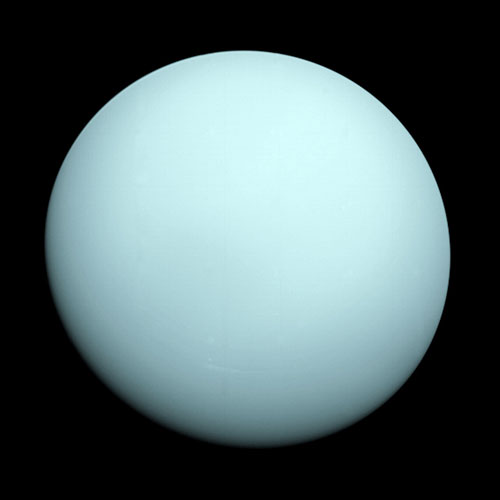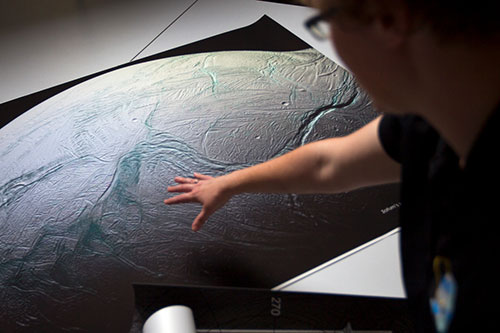PROVIDENCE, R.I. [Brown University] — Planning missions to explore other worlds in some ways boils down to an intricate game of give and take.
Scientists have a range of complex equipment they want to send into space to answer questions about how planets and moons formed, how they evolve or whether they have — or had in the past — the right stuff to harbor life. It’s the job of mission designers to figure out how much of that equipment they can fly safely around the solar system on a spacecraft that’s not too expensive, doesn’t draw too much precious power and isn’t too heavy to chuck into space.
It’s an incredibly difficult game to play, with constant push and pull between scientists and engineers.
But for the past few decades, NASA’s Jet Propulsion Laboratory in Pasadena, California, has been teaching budding planetary scientists and engineers how to play it. Each summer JPL hosts a mission-planning bootcamp called the Planetary Science Summer School. Over the years, around a dozen Brown planetary science graduate students have taken part in the program, which has roots at Brown.
“Mission planning is the sort of thing I’d like to do after grad school,” said Tess Caswell, a Ph.D. student in geology who took part in the program in summer 2015. “I like big-picture science plus engineering, and this is a great way to learn how scientists and engineers have to work together. If you think of yourself solely as either a scientist or an engineer, you can get trapped in a certain way of thinking. But if you want to fly a spacecraft to other planets, you have to wear both hats.”
Lauren Jozwiak, who earned her Ph.D. from Brown this spring and attended the JPL summer school earlier this month, agrees that learning the give-and-take game is critical.
“As scientists, we all want to send the kitchen sink everywhere, but sometimes you can only send the little cup,” she said. “That’s the reality of missions.”
The key, she said, is learning how to get the most out of that little cup.
Mock mission: Uranus orbiter
JPL chooses summer school participants through a competitive application process. Accepted students are placed onto teams and have weekly teleconferences throughout the summer to decide what destination they’d like to explore. Teams are instructed to tailor their mission proposals to the specifications for a NASA New Frontiers mission — a class of robotic missions that generally have a cost cap of around a billion dollars.
After the teleconferences, the teams head to Pasadena to put the flesh on their mission plans. During the intensive one-week workshop, students work side-by-side with members of JPL’s Team X, the lab’s advanced mission-planning group.
“It was great to get to work closely with a Team X chair,” Jozwiak said. “I’ve been able to be involved in missions before, and I’ve done science with the data. But learning how to design the mission to get that data is a rare opportunity.”
Jozwiak’s team designed an orbiter mission to Uranus. The Kepler space telescope mission has shown that ice giants like Uranus are among the most common exoplanets found elsewhere in our galaxy, yet precious little is known about the ice giant sitting right in our back yard. Scientists would love to know more about Uranus’ composition and how it formed.

Jozwiak and her team started by planning a list of key questions they wanted their mission to answer and then began thinking about what instruments they’d need to answer them.
But as soon as the team arrived in Pasadena, they hit a major roadblock. The alignment of the planets during their mission window meant that they couldn’t use Jupiter for a gravity-assist — a slingshot maneuver that would help propel their spacecraft out to Uranus. Not having help from Jupiter meant using an entirely different propulsion system than they had planned.
“We realized that we’d need to use solar-electric propulsion,” Jozwiak said. “It’s very efficient for getting you out there, but it’s very expensive. So we immediately ran up against this cost cap in figuring out what science we wanted to do.”
At that point, the team wasn’t sure if their mission would even be viable. But they took a collective deep breath and started thinking. “We wrote on the board one question: What science is worth $1 billion? What’s worth the money to the community?” Jozwiak said.
They decided that a mission that used Uranus’ gravity and magnetic field to answer questions about its interior would be important in understanding how the planet formed. Luckily, investigating gravity doesn’t require much equipment in addition to what the spacecraft already has just for guidance and communication. So in that respect, it was a “free” experiment.
“All spacecraft need a high-gain antenna to communicate with Earth,” she said. “One of the easiest ways to record a gravity experiment is to record the Doppler shift in the frequency that the transmitter is sending. So we could use that, and we don’t have to pay for a $50 million instrument.”
That embedded equipment, along with some borrowed spare parts — a leftover atmospheric probe originally designed to fly on NASA’s Galileo mission to Jupiter — gave the team a viable mission to investigate key features of Uranus’ interior, including finding out if it has a liquid phase and a solid core. Knowing those attributes could help scientists understand how the planet was formed.
Exploring Enceladus
A year earlier, Caswell and her team (which included another Brown graduate student, Vivian Sun) met similar challenges in designing their mission — an orbiter of Saturn’s icy moon, Enceladus.
Beneath its icy shell, Enceladus is thought to have a liquid ocean, which makes it a hot spot for potentially hosting life. Scientists are pretty sure the ocean is there because previous missions have found plumes of ice jetting out from the moon’s south pole — a telltale sign that a liquid ocean is erupting to the surface.

Like Jozwiak’s team, Caswell’s group started with a list of key science questions and instruments — most of which centered around using those plumes to assess the habitability of the subsurface ocean.
But it quickly became apparent that they couldn’t fly all the equipment they wanted to. One of the instruments that didn’t make the cut was one close to Caswell’s heart: an ice-penetrating radar system. Caswell studies the geophysics of ice, so getting a close look the structure of Enceladus’ ice shell would have been perfect for her work.
But as the mission’s project manager, she knew the team would have to make the tough call to leave the instrument off the spacecraft.
“We all wanted ice-penetrating radar, but it was heavy and it was a power hog,” Caswell said. “It’s also not a multipurpose instrument; it’s only good for one thing, so we had to make the call to leave it off.”
Still, Caswell’s team ended up with a viable mission that could pack quite a scientific punch.
Their final mission design — dubbed THEO ("Testing the Habitability of Enceladus’ Ocean") — featured a powerful mass spectrometer that could test the moon’s ice plumes for long-chain organic molecules — the building blocks of life. They also included an instrument that could measure the temperature and composition of the plume vents. That data could help scientists understand the forces transporting liquid to the surface, enabling them to infer key attributes of the subsurface ocean.
“If we get all of the data back — or even most of it — we could get a pretty good idea of whether or not life could exist in that ocean,” Caswell said.
The mission concept was an educational exercise, but the team hopes it could still serve as a blueprint for a future Enceladus mission. They recently published their work in the journal Advances in Space Research.
Roots at Brown
Jim Head, professor in the Department of Earth, Environmental and Planetary Sciences at Brown, has worked on NASA missions dating back to the Apollo program in the 1960s. He said that in those days, scientists traveled to JPL often for mission updates and meetings. But over the years, as mission data became more available through high-speed internet, trips to JPL became more rare.
“What this meant was that students and young researchers were no longer growing up at JPL,” Head said. “They weren’t seeing how the sausage was made, so to speak, through personal, shoulder-to-shoulder contact with JPL engineers, mission designers and mission managers.”
Head wanted to do something about it.
“In the mid-1990s, concerned about this and the negative influence on the next generation of planetary scientists, I had a conversation with JPL Director Charles Elachi, in which we discussed having the students come to JPL to have a summer school in mission design — essentially a 'bootcamp' for planetary scientists,” Head said. “For two years, we beta-tested this idea at Brown with JPL’s support and encouragement. This success then grew into what we see today with the Planetary Science Summer School.”
For Caswell, Jozwiak and many other Brown graduate students, it’s been a way to get a head start on their careers. Jozwiak is about to start a postdoc at the Applied Physics Laboratory at Johns Hopkins University. APL is starting its own version of Team X, and Jozwiak says the summer school gave her the right tools to work with that team.
Caswell too feels better equipped for a career working with space missions.
“It’s an almost once-in-a-lifetime opportunity to see how this is done,” she said. “If you want to get your foot in the door of planetary mission design, or be involved with a planetary mission, this is the fast track.”